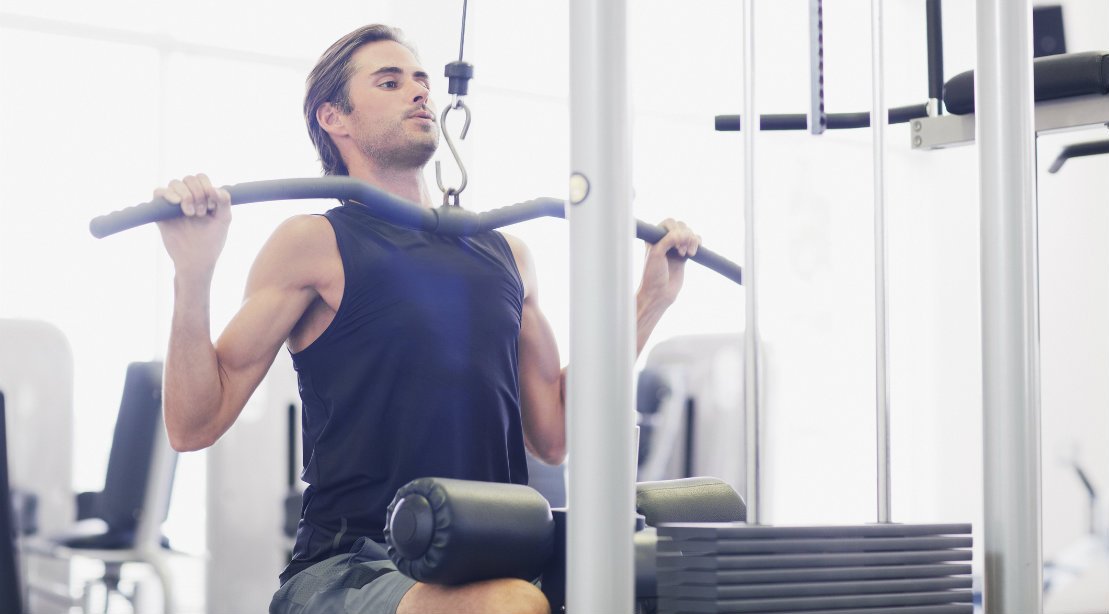The beginner workout program is designed to build and strengthen the functional base of the body. In bodybuilding it is very important to start training right, it is the wrong initial training program that can lead to failure, cause health problems and disappoint you in bodybuilding.
General guidelines for beginners
The initial training program is designed for about 1 year of training, during which time it is progressively modified. Do not get hung up on one scheme, as the body quickly gets used to monotonous activities and the effectiveness of the training decreases.
- When starting classes, do not try to load yourself as much as possible from the first workout, increase the intensity gradually. It is this approach that will allow the body to adapt to stress, strengthen health and develop a mindset for training.
- Control the recovery of the body, do not overwork, do not exercise every day. The optimal frequency is 3-4 times a week, depending on the individual characteristics of the organism.
- The duration of the workout should not exceed 1.5 hours and in some cases 1 hour.
- Do not resort to specialized exercises that target individual muscles in the initial stages of training, use mainly basic exercises.

- Concentrate on the correct exercise technique, use light weights. In the future, it is the correct technique that is laid in the beginning that will bring good results. If you initially do the exercises incorrectly, later it will be much more difficult to realize your mistakes, as a certain stereotype is developed. Not paying attention to the technique, you will not be able to fully pump the target muscles, respectively, the stimulus for growth will be much less. Therefore, before the first trip to the gym, carefully study the exercise technique.
- In the first 2-3 months of training, most beginners will benefit from the currently unpopular, but very well-proven programs for the whole body per workout.
- Train your core muscles: abs, back extensors, lower back muscles, hamstrings. These muscles take an active part in all basic exercises and it is on their strength and endurance that the results in squats with a barbell, deadlift and military bench press depend.
- Eat right, but remember that the initial phase of bodybuilding does not involve overeating.
- For the highest quality workout of muscle groups and sufficient rest, use split training.
- Use an electronic training diary, this greatly facilitates the process of building and adjusting a training plan.
Training program
The first stage (aerobic training)
Take your time to start strength training right away, but start your training with aerobic training. This will prepare your cardiovascular system and increase your overall endurance. The most affordable and optimal option is running, in addition, you can go in for swimming, brisk walking, aerobics, etc. During this period, you can do it every other day or even every day, preferably in the morning. Before each workout, do a thorough warm-up, try to stretch all the main muscles, perform movements in the main joints with maximum amplitude. Do not make sudden movements. The purpose of the warm-up is to increase joint mobility, improve muscle and ligament nutrition.
During the first stage, you need to develop the body’s tolerance to stress in order to prepare it for high-intensity strength training. If you are fond of any sports (football, basketball, volleyball, etc.) and are regularly exposed to physical activity, then this stage can be skipped. The average duration of the first stage is 2-4 weeks. Before your first strength training session, take a break for 2-3 days to give your body time to recover.
The second stage (full body)
As the study has shown, in novice athletes (or after a long break) , muscle growth proceeds more intensively on full-body programs. The use of “whole body” training is also justified by the fact that when performing basic exercises (squats, deadlifts, bench press, pull-ups) hormones are released in sufficient quantities to help recovery after training, which does not happen with a rare load in split systems. One of such people is Professor Seluyanov, who in his laboratory checked the number of hormones before and after exercise, and if after lifting the barbell to the biceps the number of hormones in the blood was 2-3 units, then after squats or deadlifts it became 5-7 units.
However, other, no less authoritative Russian experts in the field of powerlifting and bodybuilding (Faleev, etc.), believe that no hormonal release occurs when performing basic exercises. And the various effects (eg cravings) after the same squat are viewed not as a testosterone surge, but as a simple increase in blood circulation in the pelvic region. In support of this hypothesis, hormonal studies were conducted before and after exercise. In any case, in order to achieve the best result, a beginner athlete (or after a long break in training) is recommended to practice the full body system for at least 2-3 months.
- Before starting the exercises, you need to warm up for 10 minutes. The purpose of the warm-up is to raise the heart rate, improve tissue circulation, develop tendons, and raise the tone of the sympathetic nervous system.
- Use your working weight in the exercises.
- Each exercise begins with a warm-up set: 10 reps at 50% of the working weight.
- Each exercise includes approximately 3 sets and 10-15 reps. Don’t be surprised at the high repetition rate. A training program for a beginner is aimed not so much at stimulating the muscles for growth, but at preparing them. With the first strength loads, it is necessary to achieve super-compensation in glycogen metabolism, and this requires a greater number of repetitions. There are individual muscles (calves, abs) that require even more repetitions (about 20).
- Each approach should take 30-60 seconds to complete. It is this period that is optimal for strength training.
- Monitor your heart rate while exercising. The optimal pulse interval is 100-140 beats per minute. If the pulse is less frequent, then the intensity of the training is too low, if the pulse is faster, then the intensity must be reduced.

Stage three (two-day split)
Gradually, the muscles adapt to the load, and in accordance with the principle of variability, in order to achieve a pronounced training effect, it is necessary to gradually increase the volume of load on individual muscle groups, as well as increase the intensity and increase the working weight. To increase the load on individual muscles without increasing the total load (otherwise overtraining may develop ), a split program comes to the rescue.
Stage four (three-day split)
Day 1 – back and biceps
- Warm-up
- Wide grip pull-ups, 3x max.
- Deadlift, 2×8
- Bent over barbell row, 3×8
- Lifting the bar for biceps, 2×12
- Hyperexhesia (body extension)
- Any abs ( crunch ) exercise, no weights, 3 rejected sets
- Hitch
Read the main article: Back – Exercise and Workout Features
Read the Main Article: Biceps – Exercise and Workout Features
Read the main article: Press Exercises and Workout Features
Day 2 – legs and triceps
- Warm-up
- Barbell Squat 3×6
- Leg Press 2×18
- Raising on toes sitting, 3×15
- Bench press narrow grip 2×12
- French press 1×12
- Any abs (crunch) exercise, no weights, 3 rejected sets
- Hitch
Read the main article: Legs – Exercise and Workout Features
Read the main article: Triceps – Exercise and Workout Features
Day 3 – chest, shoulders
- Warm-up
- Wide grip bench press, 5×5
- Dips on the uneven bars, 3 abandoned sets
- Army press, 3×8
- Raising hands with dumbbells, 2×12
- Hitch
After the third day, you must take a break of at least two days. Classes within this stage can be continued for several months, gradually mastering new principles of training.
The fifth stage (wave periodization)
This stage of the training program is essentially no different from the previous one, except that more complex exercises begin to be included in the program, a large proportion of isolating exercises, the number of repetitions varies from 6 to 15 using periodization. Read more: Planning the training process.
Additionally, start learning:
- How to create a training program.
- The best weight training programs.
- Effective principles for gaining muscle mass.
- Training program for professionals.
- High-intensity training.

Effectiveness of the Starter Program
This Beginner Workout Program is based on literature analysis and is a typical basic outline. The program is suitable for most beginners, however, there are exceptions that cannot be predicted, and only empirical experience will allow you to establish them. A much greater risk of low efficiency arises when using specific programs that are now widely advertised and promoted. Don’t be fooled by marketing, as it is scientifically proven that basic programs like this are most effective.
Do not expect significant results, they will appear only in the third stage. Do not try to force development and skip stages, this will worsen your progress later.




